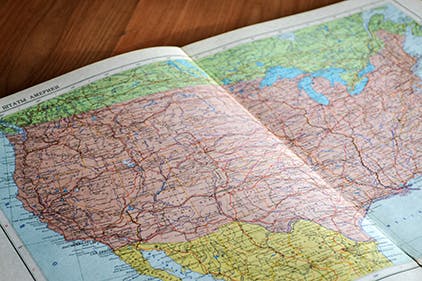How Payroll Point Processes a Shapefile
Payroll Point - a local tax identifier - processes shapefiles through the help of geocoding.

Getting the right taxes the first time in a matter of seconds seems unimaginable, but it’s real. And it takes a lot of effort - worth taking, of course. For a sneak peek behind how we make this information instantaneous for you and maintain accuracy, read on.
Picture the local tax finder Payroll Point. You enter a work address and a home address, and the application provides a detailed list of taxes almost instantly.
But how?
It begins with shapefiles. Shapefiles are the geographical information systems (GIS) industry standard for holding points, lines, and polygons together for depicting locations. The US Census Bureau provides Topologically Integrated Geographic Encoding and Reference, or TIGER, shapefiles annually. Symmetry Software utilizes them for the Symmetry Tax Engine and Payroll Point. First, more on the shapefiles themselves.
TIGER data includes complete coverage of the entire US, Puerto Rico, the Virgin Islands, American Samoa, Guam, the Common of the Northern Mariana Islands, and the Midway Islands. TIGER includes land features like rivers and lakes, as well as counties, census blocks, and school districts - which matters in states with complex local tax systems like Ohio and Pennsylvania.
However, TIGER does not provide specific data important to payroll. For data connected to Pennsylvania municipalities, a heavy hitter for payroll concerns, The Pennsylvania Geospatial Data Clearinghouse provides the information. The Oregon Department of Transportation administers data for transit districts and the Urban Growth Boundary. For the most difficult areas, like Joint Economic Development Districts and certain places in Kentucky, Symmetry creates the files based on legal documents given to us by the states.
Through the above resources, Symmetry collects and maintains over 37,000 shapefiles that are mapped into the Tax Engine. Symmetry verifies precise latitude and longitude coordinates - which Payroll Point uses to get the most accurate taxes. Once the latitude and longitude from a given address are determined by Payroll Point, the system queries our table of shapefiles to see what comes back. If the shapefile ID matches the Tax Engine code, tax information associated with that location is returned. With the most precise geographical data verified, every address put into Payroll Point results in the definite taxes related to that address.
Keep reading: related insights
Payroll Insights Newsletter
Subscribe to our quarterly newsletter for exclusive payroll insights.
